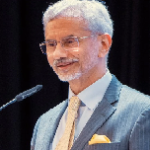US vice-presidential debates traditionally have little effect on the White House race, but with Republican Donald Trump and Democrat Kamala Harris neck-and-neck, the stakes were higher than usual in New York on Tuesday.
Trump’s running mate JD Vance and Harris’s VP pick Tim Walz both scored points in what is expected to be their only showdown, although the primary goal was always to avoid harming their running mates’ chances.
Here are five takeaways from the debate.
New faces
Walz, who was virtually unknown on the national stage before the summer, had set expectations low — comparing Vance’s academic record as a “Yale law guy” and is own humble status as a “public school teacher.”
He had a shaky start but improved as he relaxed into the conversation. Famously affable, Walz tried to weave in the occasional folksy anecdote but he often came across as defensive, dropping his trademark Midwestern charm.
Vance, who is known for his rhetorical prowess, was under pressure to make up for Trump’s dismal debate performance last month, when he was soundly beaten by Harris.
Trump had missed chances to attack Harris on immigration and inflation — failing to frame her as an incumbent — but Vance was able to score points where his boss failed.
Both candidates tackled policy specifics — the Middle East, climate change, the economy or the fentanyl crisis — which made for a more wonkish debate than the Trump-Harris showdown.
Awkward
Walz was forced to explain claims that he was in Hong Kong for a teaching position in 1989 during the deadly Tiananmen Square pro-democracy protests.
“I got there that summer and misspoke on this,” the governor said calling himself a “knucklehead” who “will get caught up in the rhetoric.”
Vance, who labelled Trump as “unfit for our nation’s highest office” before becoming a supporter and once said Trump “could be America’s Hitler” — was challenged on his remarks.
He said he had been deceived by false stories in the media and was wrong.
A proxy battle
The real contest was between Harris and Trump, with their two stand-ins focusing their sharpest attacks on the top-of-the-ticket contest.
The Minnesota governor went after Trump for ignoring the advice of scientists and economists.
“If you’re going to be president, you don’t have all the answers. Donald Trump believes he does,” he said.
He attacked Trump for bragging about avoiding taxes, and for urging Republicans to vote against a tough bipartisan border security bill.
Vance tore into Harris on immigration and accused her of driving up prices, particularly housing costs, by allowing millions of migrants into the country.
Fact checks, mic cuts
Debate fact-checking has made for an unusual controversy during this election cycle.
CBS said it would decline to debunk whoppers live on air but instead directed viewers to a blog offering real-time fact-checking.
There were a couple of on-air fact-checks of Vance — including one on man-made climate change and another on the legal status of some migrants.
This infuriated Vance, who began pushing back. The candidates’ mics were both muted briefly as they launched into a rare heated back-and-forth.
A gentler tone
But, without the bombastic ex-president, proceedings largely resembled election debates that used to take place before the Trump era: policy-focused, lacking personal attacks and cloaked in apparent civility.
There was even a tender, human moment when Walz related a shocking story about his 17-year-old son Gus witnessing a shooting in a community centre.
Vance made a point of turning to Walz to sympathize with him.
The candidates brought up their families on more than one occasion, with Vance talking about his “three beautiful little kids.”
Walz and Vance shook hands at the start, and again end of the debate as their wives joined them on stage.



